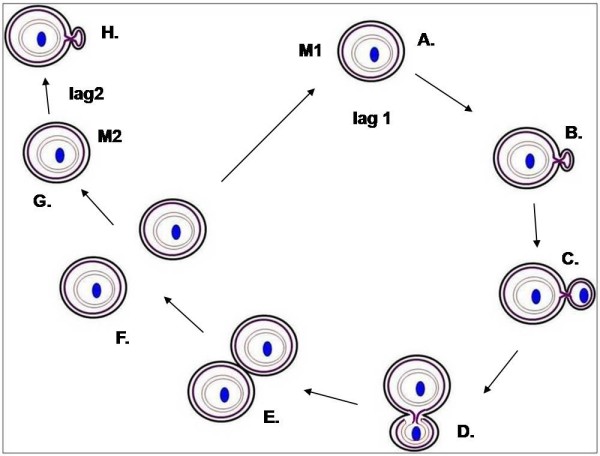Figure 6.

Gemmata obscuriglobus cell budding cycle. In (A) and (B), a bud initiates from one point of the mother cell M1 enclosing a nucleoid (blue) surrounded by a double-membrane nucleoid envelope (grey). The mother cell ICM (dark purple) is continuous with that of the bud (also dark purple). In (C), the naked nucleoid is translocated into the bud at some early budding stage. In (D), the bud nucleoid is surrounded by two membranes where an inner membrane (light purple) continuous with mother cell ICM, and an outer membrane (also light purple) shows continuity with the bud ICM. In (E), the bud nucleoid is completely surrounded by the two closely apposed membranes where membrane fusion and pinching off has resulted in a double-membrane nucleoid envelope completely separated from ICM membranes. (E) is the end-point of a possible model mechanism where the bud reached similar cell size as M1. (F) shows the separation of the mother cell and the matured bud. In (G) and (H), the mother cell M1 can initiate the next budding cycle after a 2–4 hour lag (lag 1) while the matured bud M2 can begin its first budding cycle after a 3–5.5 hour lag (lag2).
